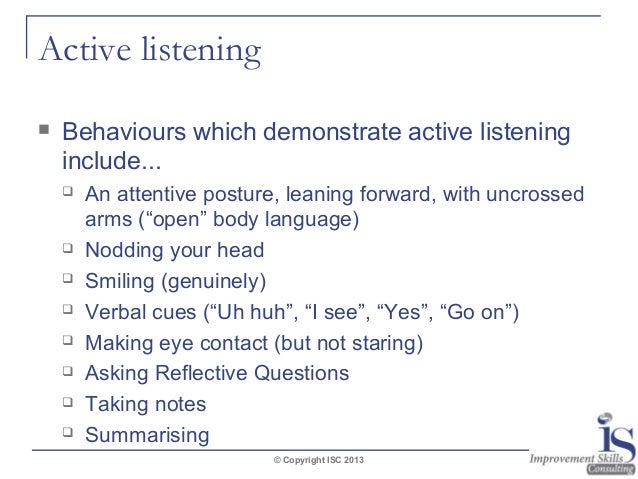
Covey writes in his book, The 7 Habits of Highly Effective People is so relevant to effective communication “Most people do not listen with the intent to understand they listen with the intent to reply” 3 Levels of Listeningīefore we develop the active listening skills and techniques, it’s crucial to understand the different levels of listening. We do selective listening with the belief that we already know enough and choose to remember only the information relevant to us. Most of the time we simply hear the other person, apply the information in our context and think about what to say next (yes, we do it all the time) even before the other person has finished speaking.Ĭognitive bias impedes our ability to listen to what the other person has to say or in some cases intends to say. Our cognitive biases in the form of personal filters through our thoughts and beliefs can impede communication. Active listening on the other hand unlocks the natural flow from inside to the outside as it builds a connection through trust. The feeling of not being heard can stop people from sharing or withholding useful information thereby preventing us from seeing a better version of reality. It can enable powerful coaching which can lead to better problem solving. Learning to listen in communication unleashes creative energy and enables productive collaboration that forms the basis of meaningful relationships.

Active communication requires comprehending the message by going beyond words to intention and non-verbal communication. Active listening, also called effective or attentive listening is a way of learning through conversation.


 0 kommentar(er)
0 kommentar(er)
